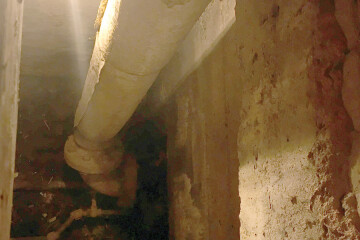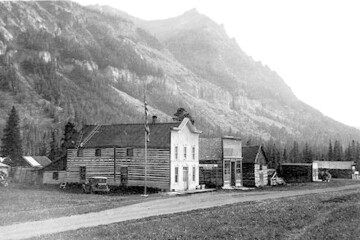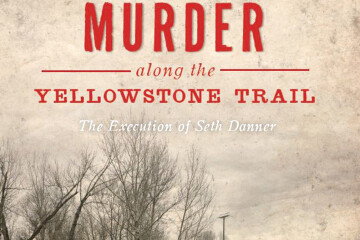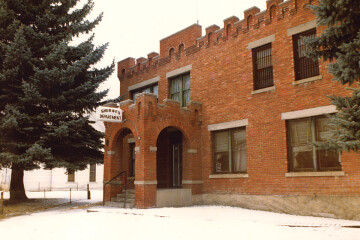Banquet of Champions The 1954 National Soap Box Derby
In 1933, the soap box made its debut on a bumpy hill in Dayton, Ohio. What started with three boys quickly escalated up to hundreds of homemade crate cars and nearly 40,000 spectators by the end of the summer. It was in the heart of the Great Depression, and much like horseracing, having something to root for helped boost morale. That first year, a boy named Bob Gravett painted a number “7” on his car, later stating he chose the number because it was the easiest to write. An image of the car “Old No. 7” became part of the official Soap Box Derby logo. Eventually each state started holding competitions, with the winners being sent to Akron, Ohio, where the national Soap Box Derby was held and chosen because Chevrolet had promised to build a permanent track there.
The cars varied from primitive crates on baby buggy wheels to repurposed saloon bar wood, basically anything and everything that a boy could get his hands on to construct a car-like form. The derby was a huge success and continues into the present day, although a scandal involving a magnet in 1973 in the wake of Watergate nearly lost the Derby credit.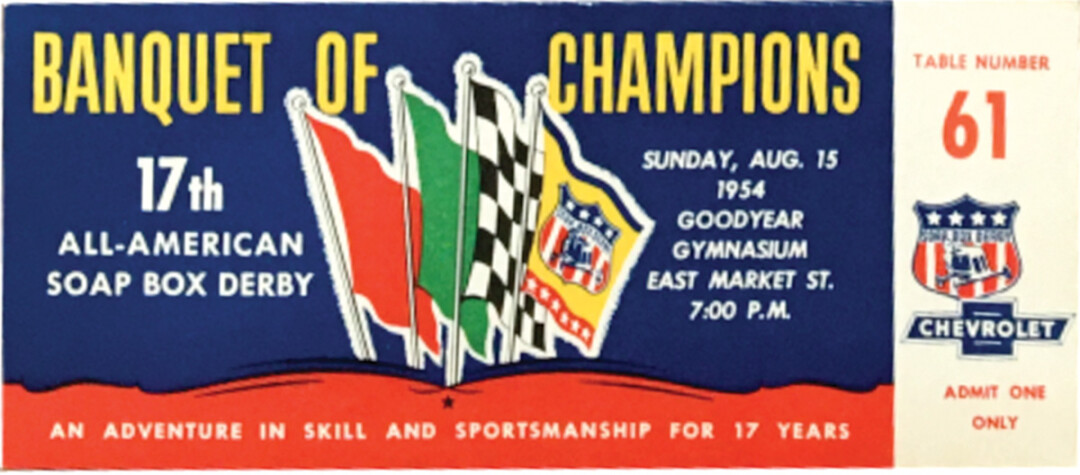
The July 12th, 1954, afternoon edition of the Bozeman Daily Chronicle was proud to announce that Paul Elder, Bozeman native, had won the Montana Soap Box Derby by half a car length. The winning moment was captured and printed in the paper along with an image of Mrs. Walter Elder, Paul’s mother, at the judges’ stand with her son and the second place winner Chuck Fulton. There had been over 70 racers that year. Paul was 14 years old, and would represent Montana in Akron that August. The Chronicle itself would sponsor Paul’s trip, including all expenses (his Bozeman sponsor had been Canyon Tractor Company). The second place winner, Chuck Fulton, received a new bicycle.
At the event in Bozeman that year, among the crowd of 1,500 observers, was Mrs. Mary Strickland of Akron, Ohio, who invited Elder to visit her during the national race there that August. It is unknown if they met again in Akron. The event in Bozeman had been kicked off with a race between Mayor Lowe of Bozeman and Mayor Gilchrist of Livingston, with the former being the victor. Along with the race winner, awards were handed out to Larry Binder for best constructed car and Bill Evers for the best upholstered car.
Those going to Akron had a full schedule that included presentations, banquets, and outdoor activities like swimming, baseball and boating. There was even an annual Soap Box Derby Mothers’ Luncheon. Champions traveling for the event were welcomed with a letter from Leo Berg, Mayor of Akron, which was mailed along with a schedule of all events and the buses that would coordinate it all. For example, day one of the event week, Thursday, August 12th, a “Welcome Champion” band greeted all arrivals at the hotel for registration where champions received hats, shirts, Levis, badges and a program. They were then transported by bus to Derbytown for “Champions in Camp” where they spent the day doing regular outdoor camp activities including water sports and singing songs. The weekend progressed in this fashion until Sunday, when the races were held following church services. That evening, the “Banquet of Champions” would be held with a menu of a chilled cantaloupe, celery, mixed olives, carrot sticks, roast prime tenderloin of beef in a mushroom sauce, green peas in butter, rissole potatoes, combination salad with French dressing, assorted dinner rolls, coffee, Soap Box Derby emblem dessert and cookies. Entertainment for the evening included Helen Haag’s Chimpanzees, a presentation of racing diplomas to each champions and the presentation of the Oil Can Trophy to the grand winner.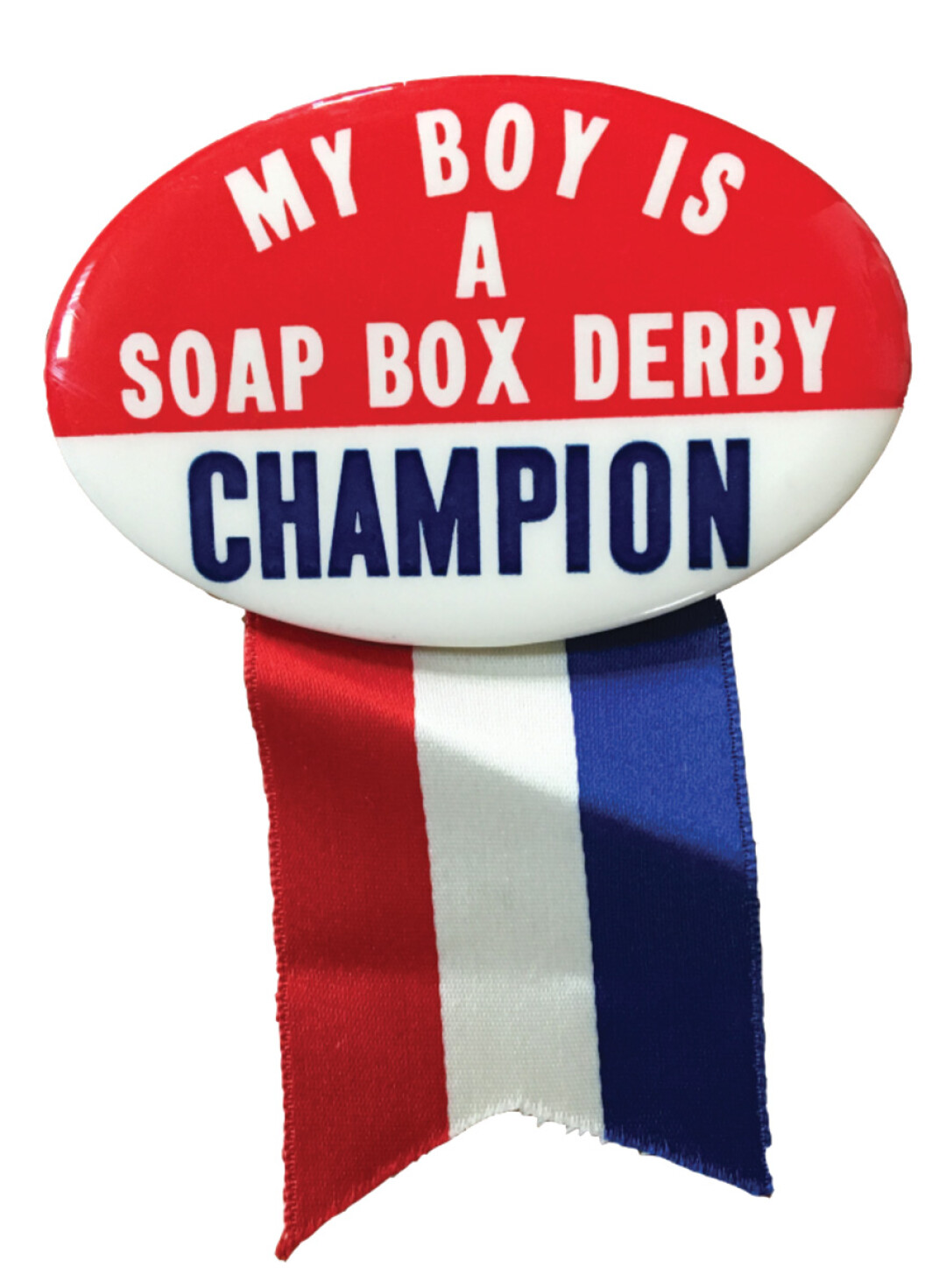
The souvenir program featured the Derby Logo with “Old No. 7” and featured a section on interesting facts about Derby Downs. The track “from Topside to finish line” was 1,265 feet with a racing distance of 975 feet. A bridge over the finish line contained cameras and developing equipment that allowed for photos to be produced just two minutes following a heat. Probably the most interesting fact was about a totem pole in front of the Downs that had been a gift from the Juneau, Alaska, Rotary Club. There was also a Canadian Maple that had been a gift to symbolize the friendship between Canada and the USA. The program also featured photos of the previous 16 champions and a schedule of the first round.
Paul Elder was participating in the 30th heat, in car number 23, against Thomas D. Dombroski of Syracuse, N.Y., and Richard D. Kemp of L.A. This was followed by a two-page spread where those attending could keep track of the winners by heat number, a list of prizes and a back page spread of Derby Sponsors for that year. Each champion received a wrist watch and diploma; those who ranked from fifth to first place received incremental amounts in scholarship funds while those tenth to sixth place received prizes such as movie projectors and power tool sets.
According to the official rule book of 1955, the Soap Box Derby was “strictly a BOY’S event,” written in just that manner. By 1975, girls were competing as well. Rule number four stated that the work done in building the car must be completed by the entrant and rule number five stated the cost of the car could not exceed $10. Rules number six through seventeen pertained to the various parts of the car and the rest referred to the races themselves.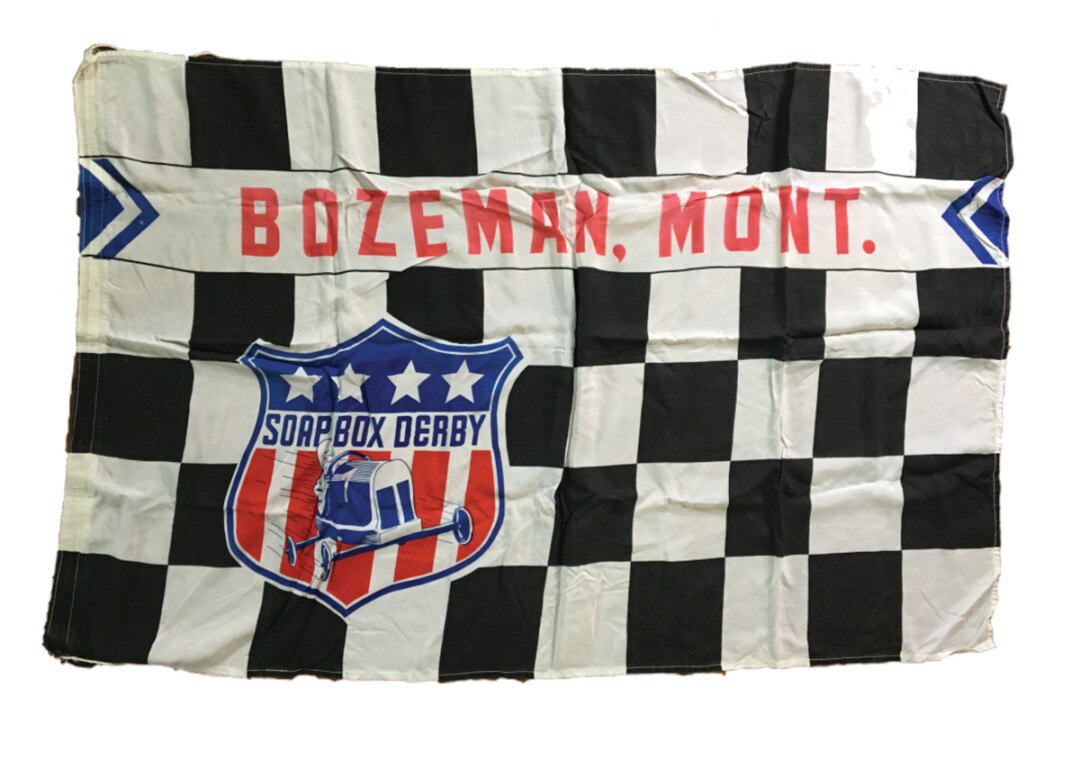
The official records of the Derby were most likely sent out following the event. This booklet included short biographies of each of the racers. Paul’s read: “A ninth grader, Paul, 14, has his eye on winning a scholarship so he can attend Montana State College in his hometown. He is five feet, four inches tall and weighs 108 pounds. He won over a field of 70 to become the only Montana champ in the Akron event.” Paul would come in last in his heat, losing out to Richard D. Kemp in the first round. Kemp would win the second and third round as well to be the 1954 Soap Box Derby Champion.
The Gallatin History Museum is now the proud caretakers of memorabilia saved from Paul Elder’s Soap Box Derby experience. The items include rule books, event programs, racing shirts, badges and newspaper clippings as well as a Derby flag and the tag signifying that the pair of Levi’s Elder received were genuine. This collection represents an era that has captivated those who lived it and those who have heard the tales.

